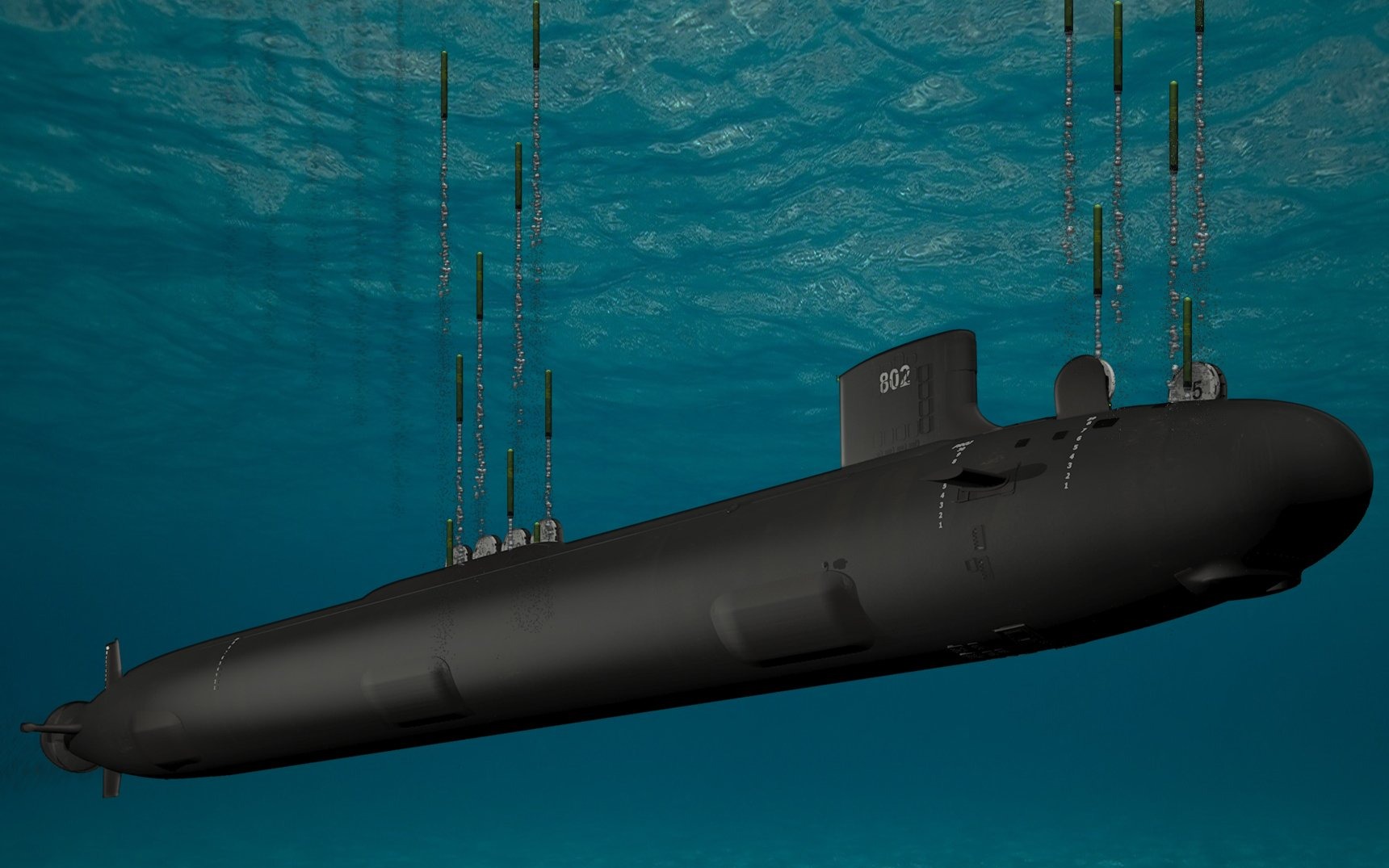The Navy's Block V Virginia-Class Submarine Is Something No Nation Can Match
In any potential conflict between China and the U.S., submarines, especially attack submarines, will play a critical role. The U.S. Navy's Virginia-class Block V attack submarines, currently under development, represent the pinnacle of attack submarine technology.
Summary: In any potential conflict between China and the U.S., submarines, especially attack submarines, will play a critical role. The U.S. Navy's Virginia-class Block V attack submarines, currently under development, represent the pinnacle of attack submarine technology.

Key Points and What You Need To Know
-These subs are designed for close-quarters combat, equipped with advanced systems such as photonic masts instead of traditional periscopes, and can stay underwater for extended periods due to their nuclear reactors. Key features include the Virginia Payload Module, which adds four large-diameter payload tubes capable of carrying 28 Tomahawk cruise missiles.
-The Navy is also planning future updates with Block VI and Block VII variants.
Submarines will play an important role in any potential conflict between China and the U.S.
The ability of some subs to hit targets thousands of miles away with ballistic and cruise missiles is especially important. But for close-quarters work, navies turn to attack submarines. And the U.S. Navy will soon have the best attack submarine yet, in the form of the Virginia-class Block V sub.
The Virginia Block V Attack Submarine
As we have previously discussed here at The National Interest, attack submarines are the backbone of any submarine force. Unlike their ballistic missile and cruise missile cousins, which can carry nuclear warheads and are mainly concerned with long-range targets, attack submarines are designed to disrupt and destroy enemy shipping. They can do so either in the old-fashioned way via torpedoes, or with cruise missiles.
When it comes to attack submarine technology, Virginia’s Block V is the best in the world.
The Navy currently has 22 Virginia-class submarines of Blocks I through IV. The Block V update is currently under development, with 10 vessels in various stages of the process. Two of them (SSN Oklahoma and SSN Arizona) have had their keels laid, four are under construction (SSN Barb, SSN Tang, SSN Wahoo, and SSN Silversides), and four are scheduled (SSN John H. Dalton and three currently unnamed).
What Makes the Block V Virginia-Class So Special
Several technological innovations make the latest Virginia attack subs better at littoral operations. Moreover, the submarines can better accommodate and support special operations forces. They offer more room, and they also have a better system to launch frogmen underwater. This is a key capability. In a potential near-peer conflict with China in the Indo-Pacific, special operations forces would have an important role sabotaging and harassing enemy forces.

Virginia attack subs also don’t carry a traditional periscope but instead rely on two photonic masts that provide physical and infrared views to the crew. Much like its Los Angeles-class predecessors, Virginia class attack submarines rely on a nuclear reactor for their power, meaning that they can stay underwater and operational for extremely long periods of time. They are only restricted by the amount of provisions and ammunition they can carry.
The biggest component of the Block V update is the Virginia Payload Module, which incorporates four additional large-diameter payload tubes in a brand new hull department in the middle of the vessel. Each additional payload tube can carry seven Tomahawk cruise missiles, for an additional 28 cruise missiles overall.

The Navy doesn’t plan to stop at the Block V variant. The service is already working on Block VI and Block VII concepts that would leverage Block V technology.
About the Author
Stavros Atlamazoglou is a seasoned defense journalist specializing in special operations and a Hellenic Army veteran (national service with the 575th Marine Battalion and Army HQ). He holds a BA from the Johns Hopkins University and an MA from the Johns Hopkins’ School of Advanced International Studies (SAIS). His work has been featured in Business Insider, Sandboxx, and SOFREP.


